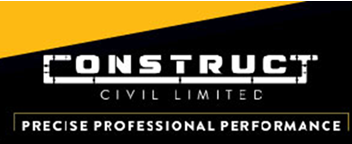Title Page
-
Document No.
-
Audit Title
-
Client / Site
-
Conducted on
-
Prepared by
-
Location
-
Personnel
NATURE OF WORK
-
What is the work plan/work method, and how is this communicated to all those involved in the excavator operations?
-
Has a site-specific and current hazard identification/control been conducted?
-
Have workers been trained on its content?
-
Have the key causes of harm identified?
-
Are the hazards identified?
-
Are the hazard controls outlined?
-
How are workers in the vicinity warned of machine operation?
-
Have underground utilities (water, sewer, gas, telecommunications) been identified, located and marked prior to excavation?
-
Have overhead utilities (power/phone lines) or obstacles been identified?
SITE SECURITY
-
Is the site externally secure? (e.g. fencing, barriers)
-
Is the site internally secure? (e.g. fencing, barriers)
-
Are there exclusion zones and/or a spotter around the mobile plant?
OPERATOR COMPETENCY
-
Operator competency?
- Unit Standards
- Evidence of company or manufacturers training
- Familiarity with machine
ONBOARD DOCUMENTATION
-
Operator/manufacturer’s instructions
-
Log books<br>
-
Pre start checks in line with the above
-
Proof of regular planned inspections
-
Operator instruction decals legible
-
Load lifting charts when used for load traversing
OPERATOR PROTECTIVE STRUCTURES (OPS)
-
ROPS - Roll Over Protective Structure
-
TOPS - Tip Over Protective Structure
-
FOPS - Falling Object Protective structure
-
COPS - Cabin Operator Protective Structure
-
Certified and fit for purpose (in the cab)
-
Used with seatbelts?
SLEW SAFETY ZONE
-
Is the continual movement of the machine increasing the danger of the slew zone managed?
BLIND SPOTS
-
Restricted operator views necessitate use of mirrors (if fitted) or spotter.
-
Are movement warning devices active? (Look for audible alarms, flashing lights.)
-
If a spotter is assigned to assist the operator are they aware of control measures and in constant communication?
EQUIPMENT AND ACCESSORIES
-
Are quick hitches used correctly and locking pins used?
-
Are lifting eyes/hooks rated and loads lifted within the manufacturers instructions for range and height?
-
Are slings and lifting equipment rated and used correctly?
GENERAL CONDITION OF EXCAVATOR
-
Are hoses and rams free from any excessive leaks?
-
Controls return to neutral when released and operation ceases (can indicate incorrect hydraulic oil pressure)
-
Boom parts and digger attachments show no signs of excessive wear or deformation
-
Safe operator access and egress in and around excavator?







